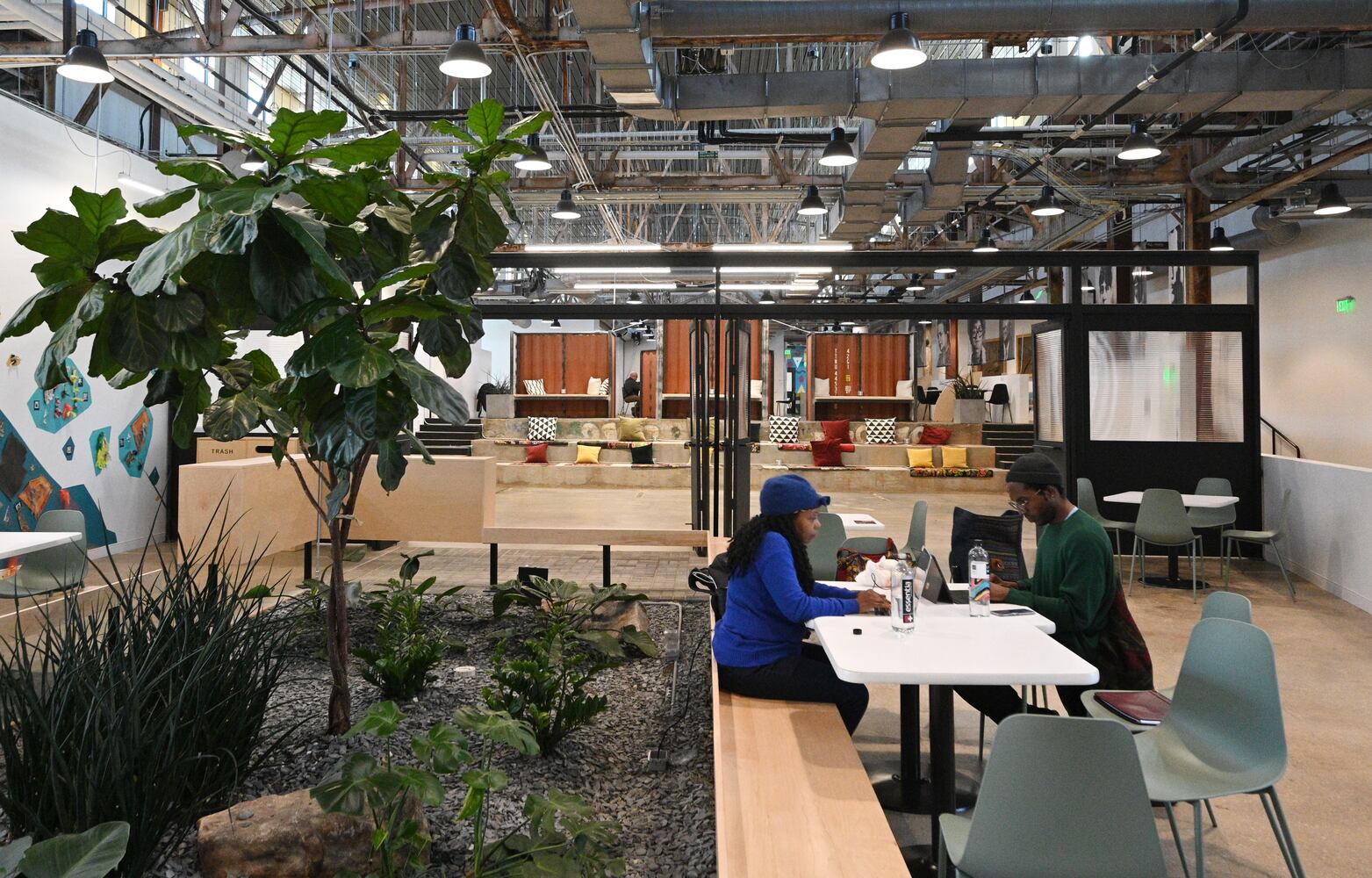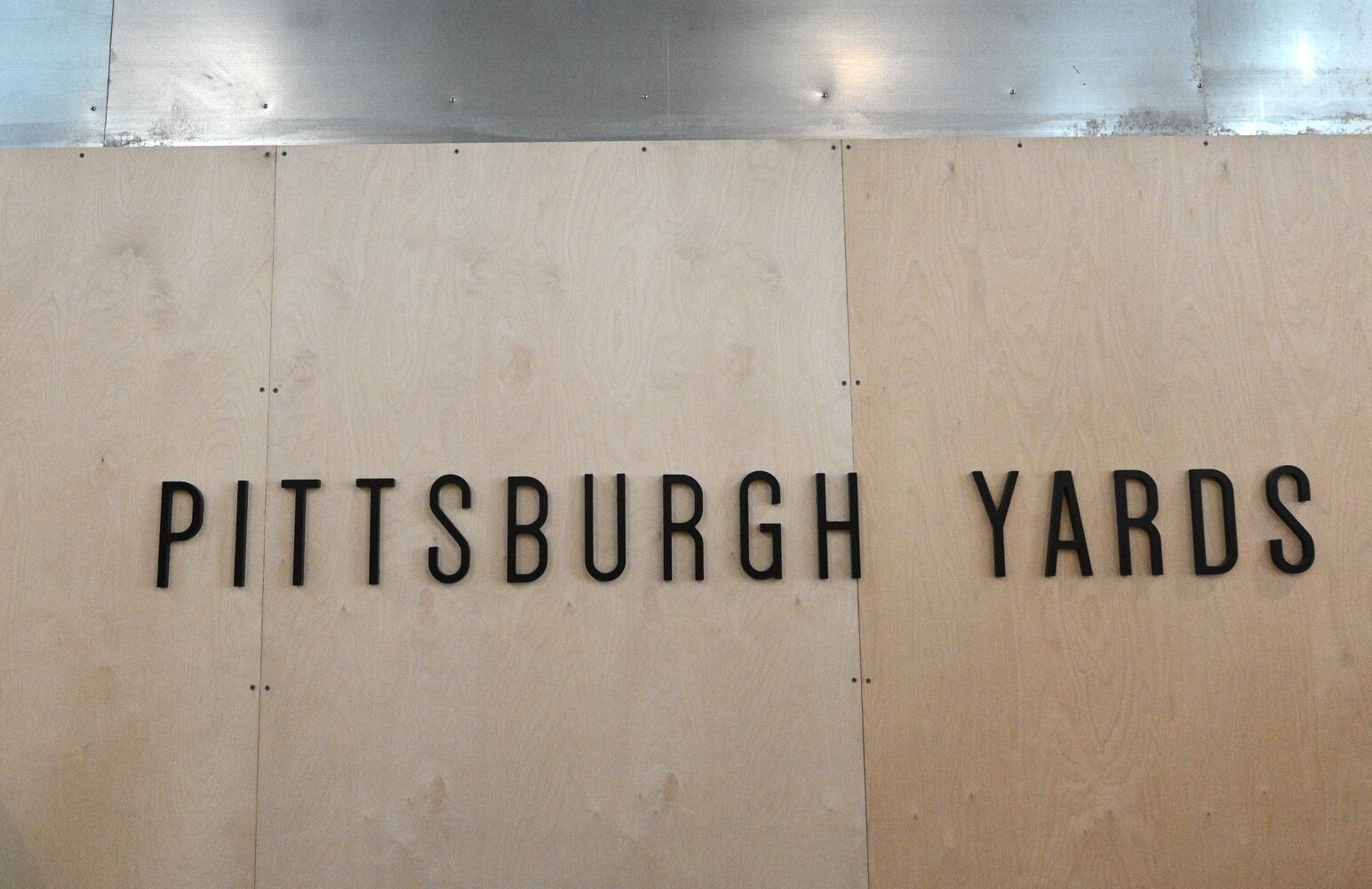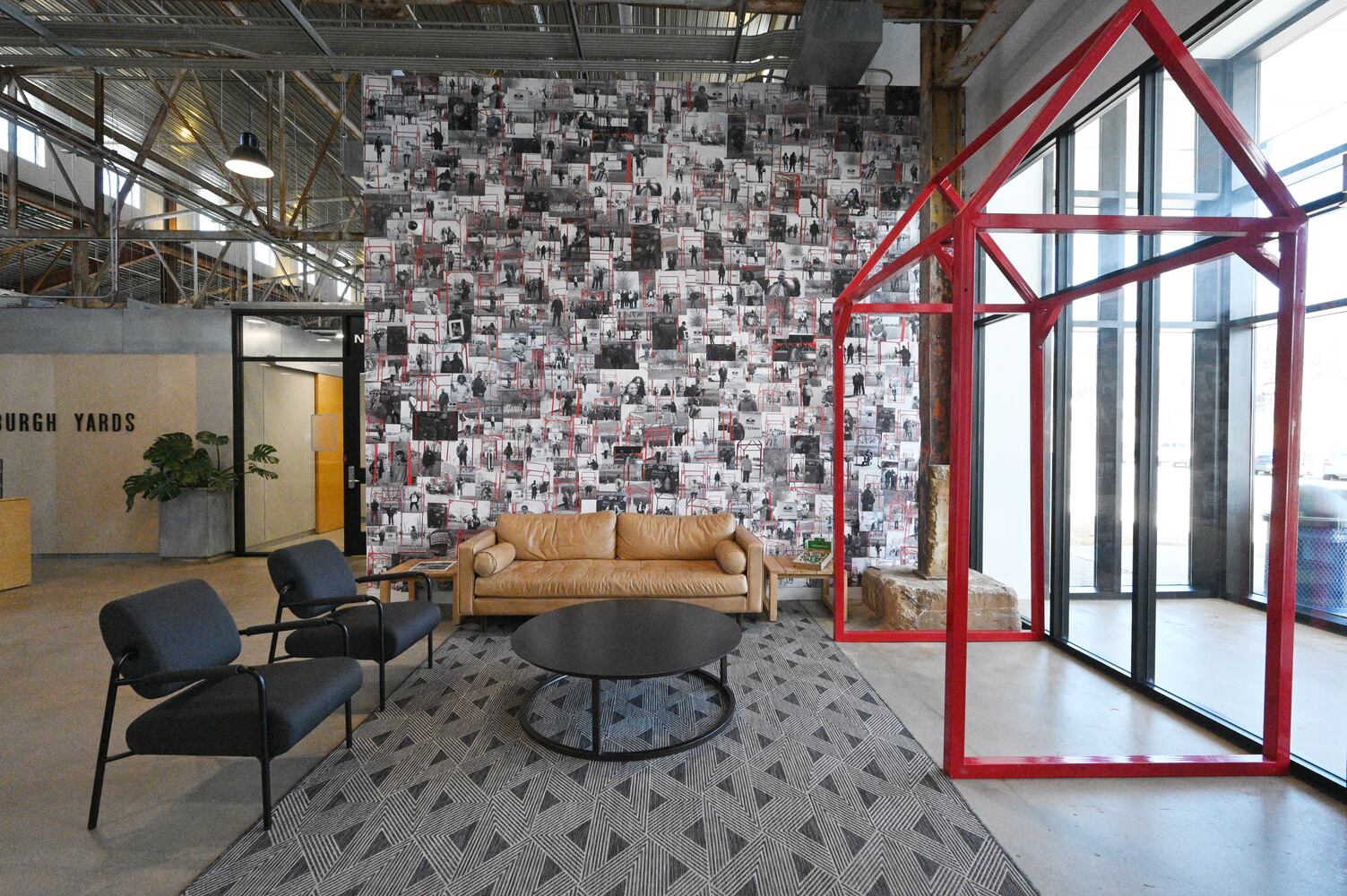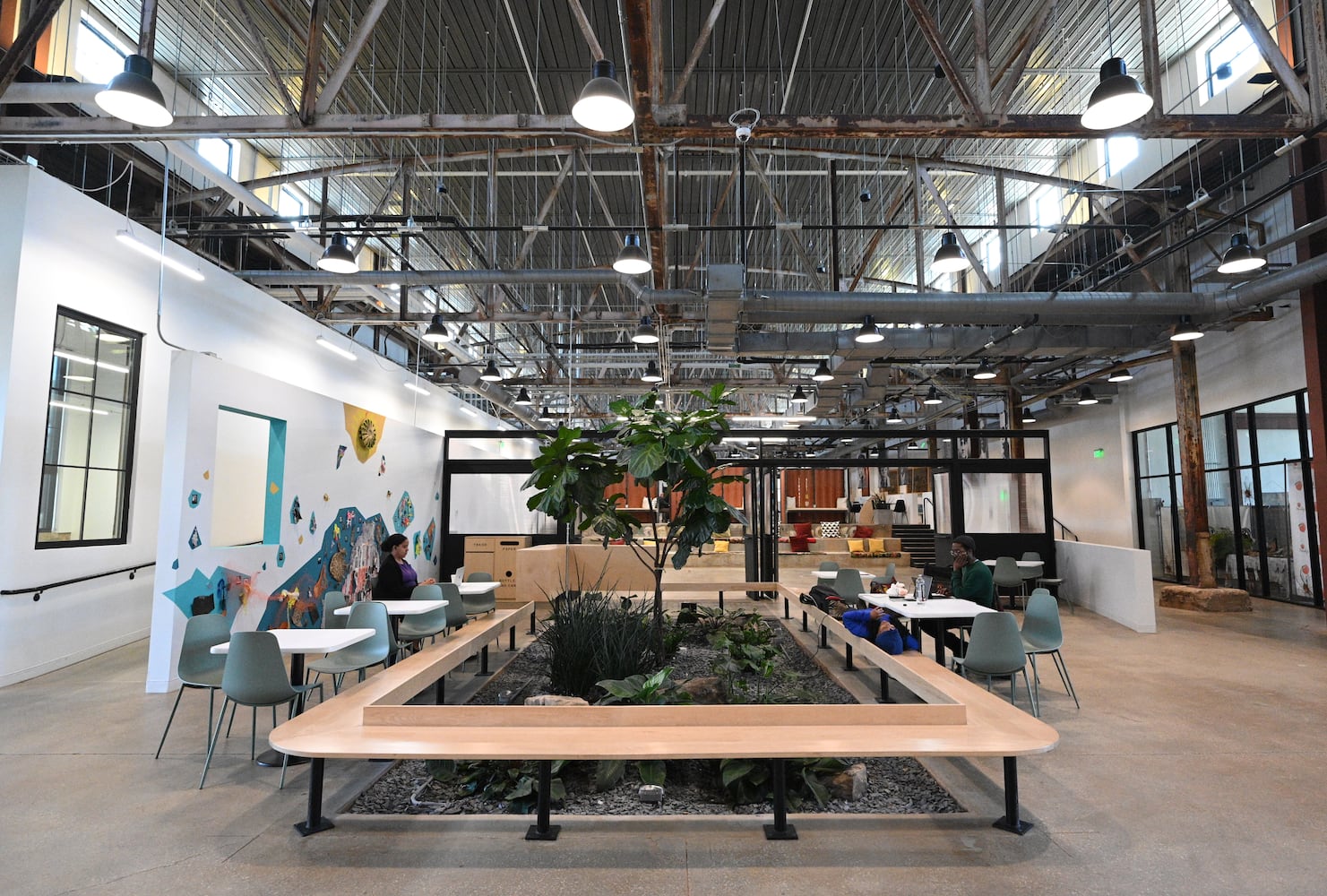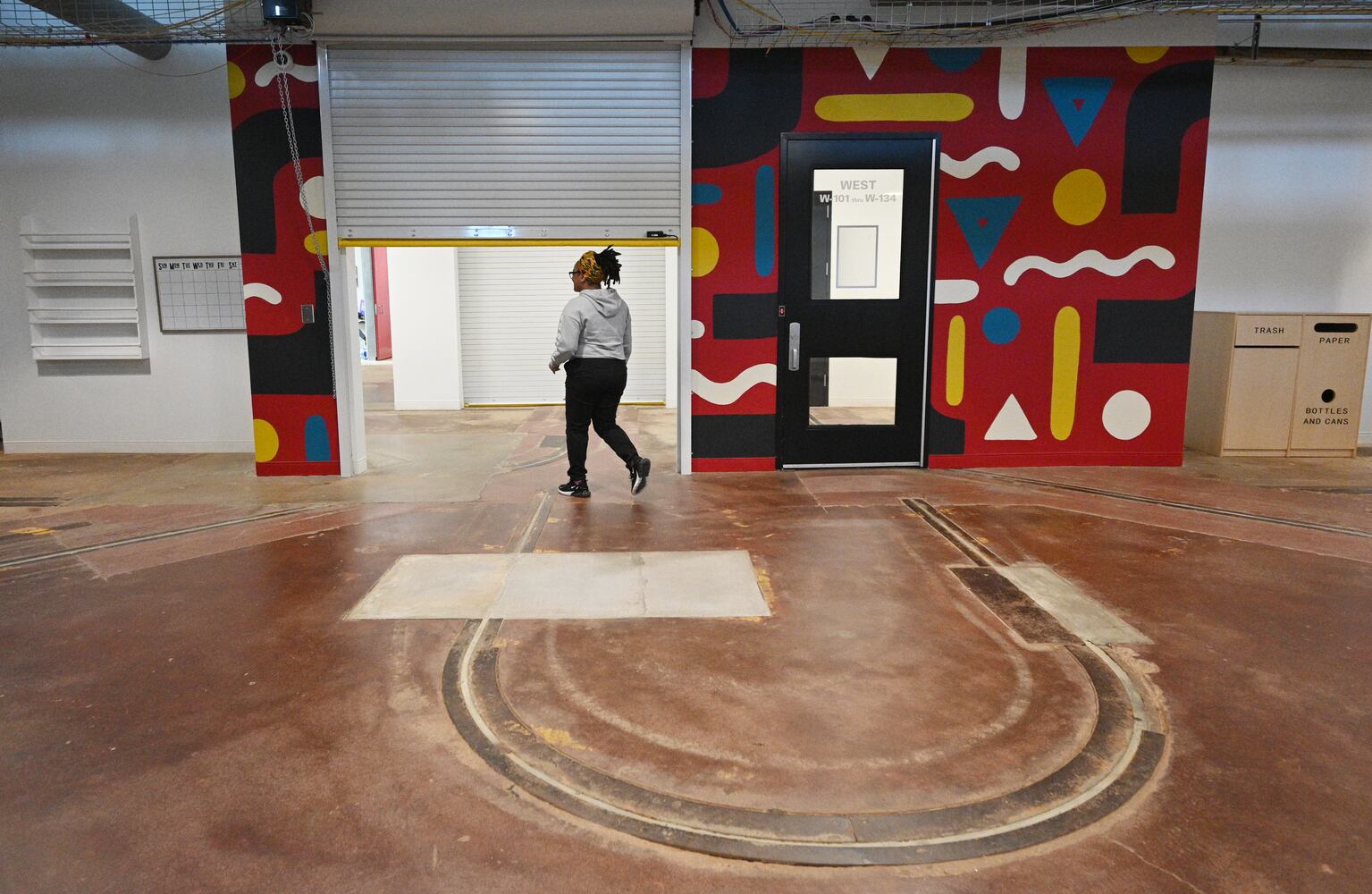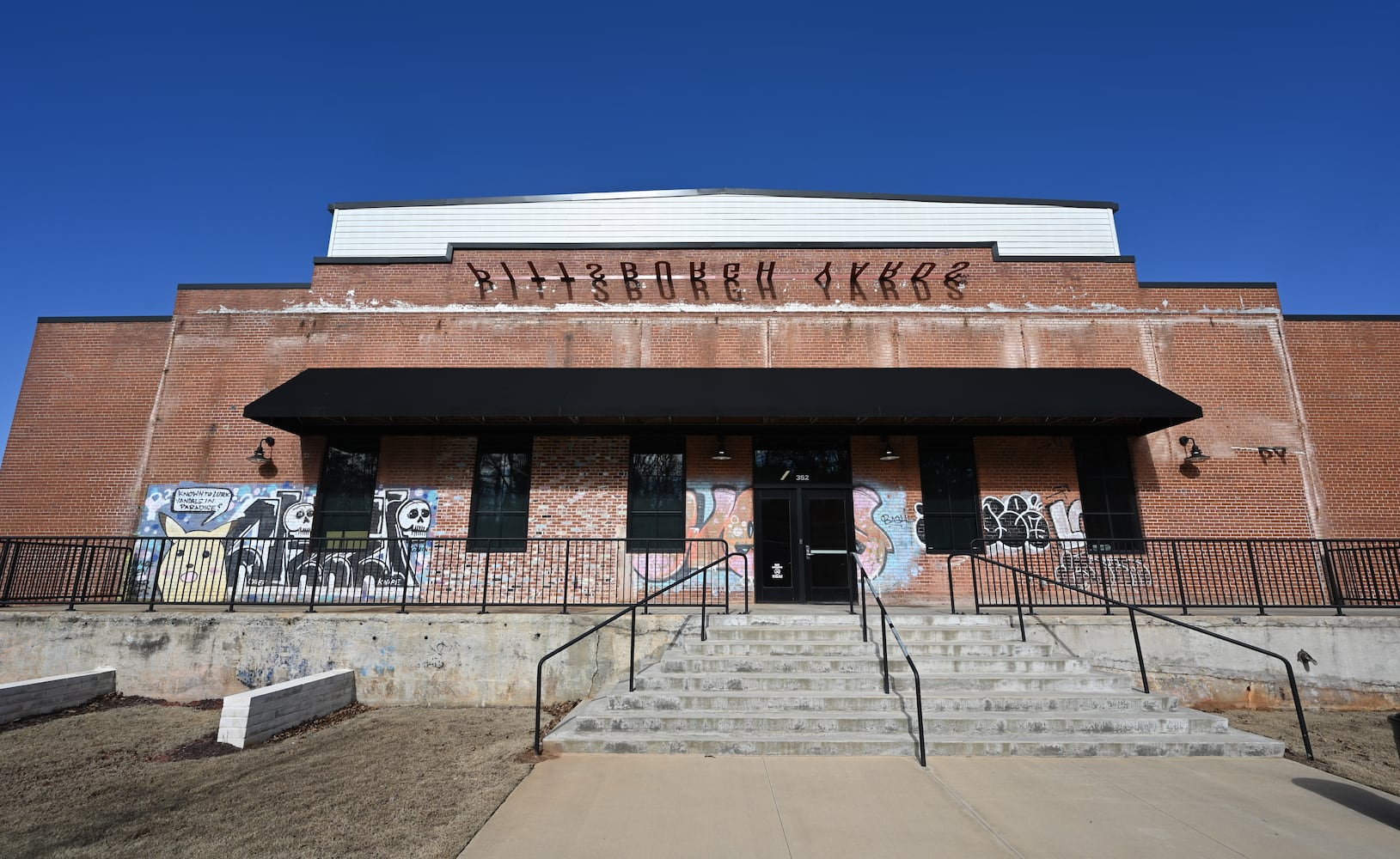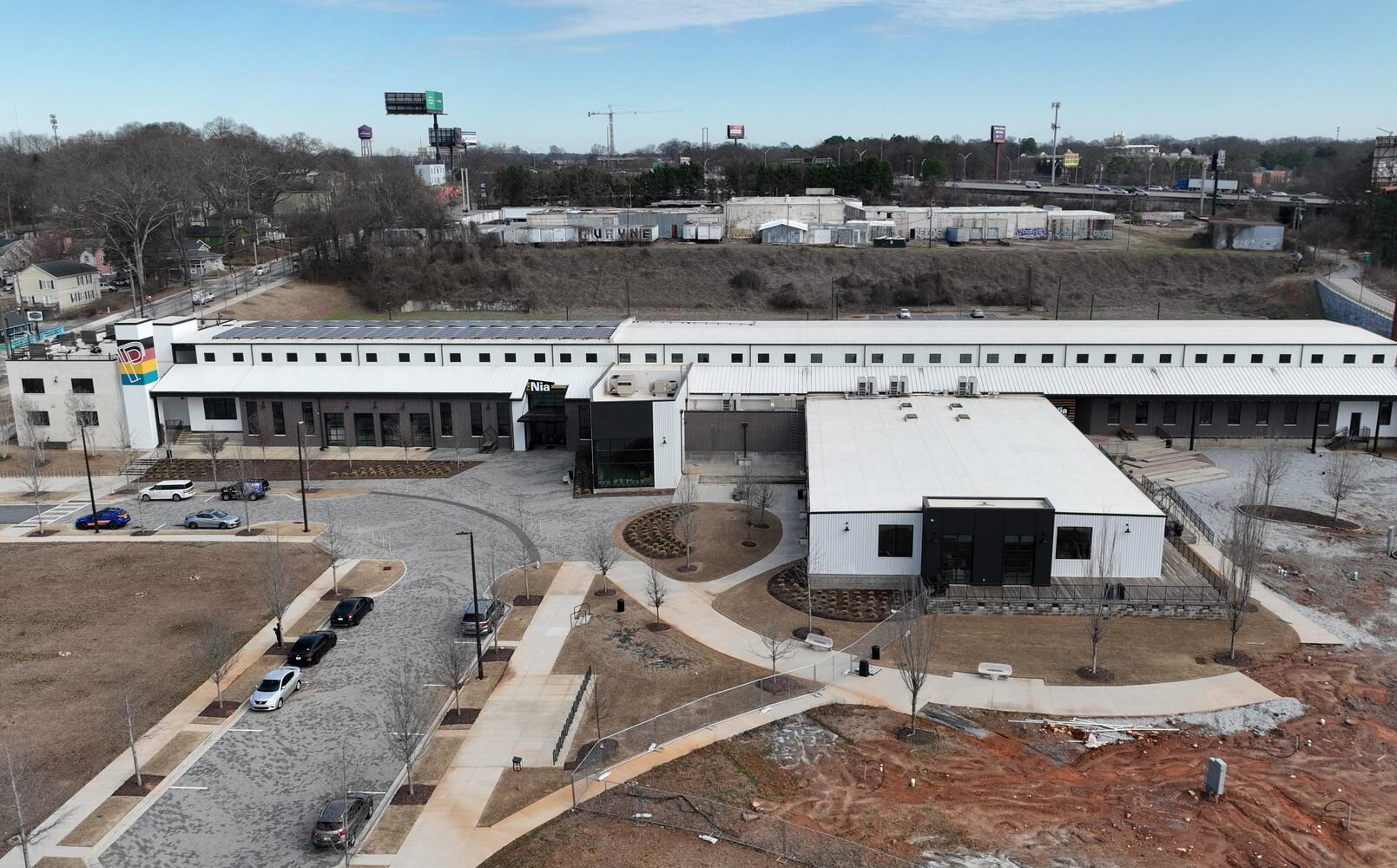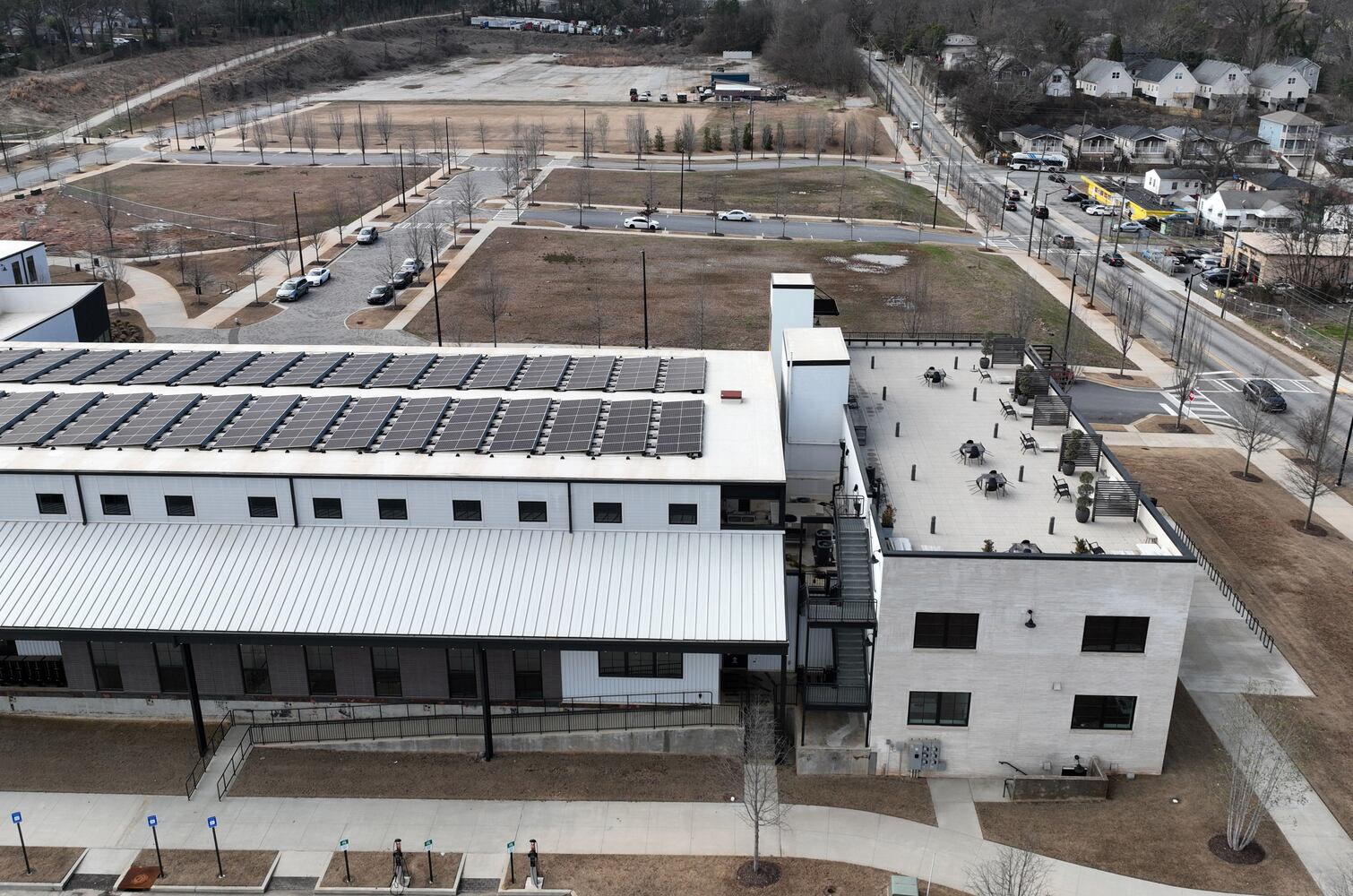A project intended to lift up one of Atlanta’s most disinvested areas is poised for rapid growth, and its leaders are adamant the expansion will further its community-focused mission — not come at the expense of longtime residents.
A nonprofit, the Annie E. Casey Foundation, aimed to transform an abandoned trucking terminal south of I-20 into a new business ecosystem about three miles south of downtown Atlanta. The result is Pittsburgh Yards, a mixed-use development with a focus on co-working space and entrepreneurial support. It’s expected to eventually span 31 acres, serving as a community hub and destination along the Beltline Southside Trail.
The project’s first building opened more than a year ago and quickly attracted small businesses, prompting the Annie E. Casey Foundation to pursue expansion options. The nonprofit recently placed five acres of nearby pad sites on the market for other companies to develop and add to Pittsburgh Yards’ scope.
“There’s a lot of opportunity at this project, with all of the leakage with jobs — everything is going up to the north (Atlanta area),” said Re’Nauta Bell, an office tenant advisor with Cushman & Wakefield who is in charge of leasing efforts for the pad sites. “We’re going to create space for folks to come back.”
Credit: Hyosub.Shin@ajc.com
Credit: Hyosub.Shin@ajc.com
She said the land has the potential to create up to 1,000 jobs. She added that the new development will need to serve the surrounding area, which includes historic Black neighborhoods that have endured generations of underinvestment.
The project is supported by million of dollars in federal and local grants and tax credits and serves as a proof of concept on how to revitalize underserved areas along the Beltline without gentrifying the area.
Kamau Franklin, a Pittsburgh resident and activist who leads a group focused on stopping gentrification, said he’s wary of large Beltline-adjacent projects. However, he said his group rents a space within Pittsburgh Yards and he’s cautiously optimistic that it can provide a benefit to the community.
He said it’s too soon to tell whether the project can grow to such a large size without inevitably pricing longtime residents out of the area.
“You can’t just go in with good intentions,” Franklin said. “... A project of this size located in a working-class or poor Black community always has the potential to help support gentrification.”
‘The heart of this community’
Founded in 1883 by formerly enslaved people, the Pittsburgh community is one of the oldest in Atlanta.
The residential neighborhood centered around rail yards, which helped give the community its name because the industry’s smog was reminiscent of the steel mills in Pittsburgh, Pennsylvania.
The Annie E. Casey Foundation has owned the shuttered trucking terminal off University Avenue since 2006, but it took more than a decade for its leaders and the community to develop the Pittsburgh Yards vision. Eloisa Klementich, the president and CEO of Invest Atlanta, said Pittsburgh and the surrounding neighborhoods desired economic opportunity.
“What they were noticing when they were talking to many people in the community was that many individuals had ideas about starting a job or starting a business, but didn’t really have the network around them to provide support,” she said.
Pittsburgh Yards raised $26 million, including $6.5 million in New Market Tax Credits from Invest Atlanta, and began transforming the empty terminal into a co-working building with more than 100 offices. The Nia Building, named after the Kwanzaa principal of purpose, held a grand opening event in September 2021 before opening to tenants three months later.
It was designed to preserve its industrial roots, converting shipping containers into work booths and allowing existing rail tracks to weave throughout the building’s hallways. All artwork in the building was created by local artists and much of it highlights notable figures from the neighborhoods that make up Neighborhood Planning Unit V, which includes Pittsburgh.
“The history of these communities must be preserved,” said Chantell Glenn, a senior associate with the Annie E. Casey Foundation. “That shows up in this space.”
Credit: Hyosub.Shin@ajc.com
Credit: Hyosub.Shin@ajc.com
The building’s three wings are tailored for certain types of businesses, including creative spaces, quiet offices and industrial shops. More than 86% of the space is leased, and more than half of the tenants live in south Atlanta. The remaining spaces are available for monthly rents between $600 and $1,200.
Invest Atlanta opened a resource center at Pittsburgh Yards last year, and Klementich said the building’s initial success has created an estimated $40 million worth of economic impact.
Room for growth
Destiny Brewton ran her custom embroidery business, A House Called Hue, out of her apartment before the Nia Building opened.
“My neighbor actually moved out because of me,” she said because of the constant noise from her three sewing machines.
She’s now located in the Nia Building’s industrial wing and has space for five machines, but she’s quickly outgrowing her small unit. Brewton said she hopes the pad sites will be used to allow businesses to scale up, since she likes Pittsburgh Yards and wants to stay.
Credit: Hyosub.Shin@ajc.com
Credit: Hyosub.Shin@ajc.com
The pad sites are just one of the new additions coming to Pittsburgh Yards. An outdoor shipping container plaza will open by late spring, mostly consisting of local food stalls. There’s space for up to 10 vendors, who can effectively operate a food hall for tenants and Beltline users.
“A container is that perfect sweet spot to sell your product, grow and then move on as your business grows to a bigger spot,” Klementich said, adding that Invest Atlanta is helping provide loans to support the container program.
Something that’s unlikely to join Pittsburgh Yards is dense housing.
Glenn said the Nia Building has five apartments, three studios and two one-bedroom units, which have been leased at 60% of the area median income — meaning an individual can’t make more than $40,500 to qualify. Bell said the project’s main focus is providing employment opportunities for the area’s existing residents.
“We need something where we are elevating the community, not just giving them places to live,” Bell said.
Pittsburgh and the surrounding neighborhoods were greatly affected by the housing crisis and Great Recession, leaving many homes in the neighborhood vacant and blighted. With metro Atlanta experiencing ballooning rents and home prices in addition to rapid population growth, it’s fueled local concern about gentrification.
While home prices in Pittsburgh have appreciated since the Nia Building opened, that growth lags behind that overall for Atlanta and Fulton County. The average Pittsburgh homes’ value increased 10% from Sept. 2021 to Dec. 2022, compared to 14% for Atlanta and nearly 20% for the county, according to Zillow.
Bell said the pad sites are zoned to allow for buildings up to 225 feet tall, which opens up lots of possibilities, such as incorporating large industrial shops, medical spaces or even a trade school.
“Pittsburgh Yards is ultimately going to serve as the heart of this community,” Bell said. “It’s already shaping into that.”
About the Author
Keep Reading
The Latest
Featured
